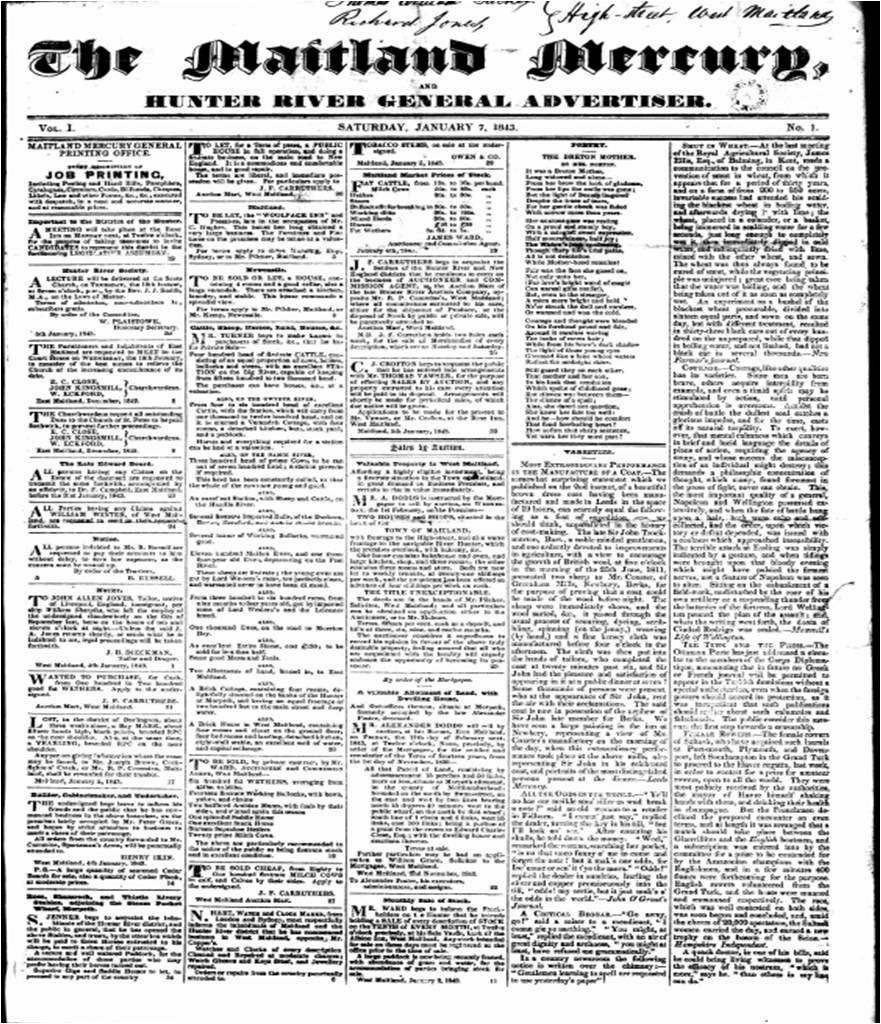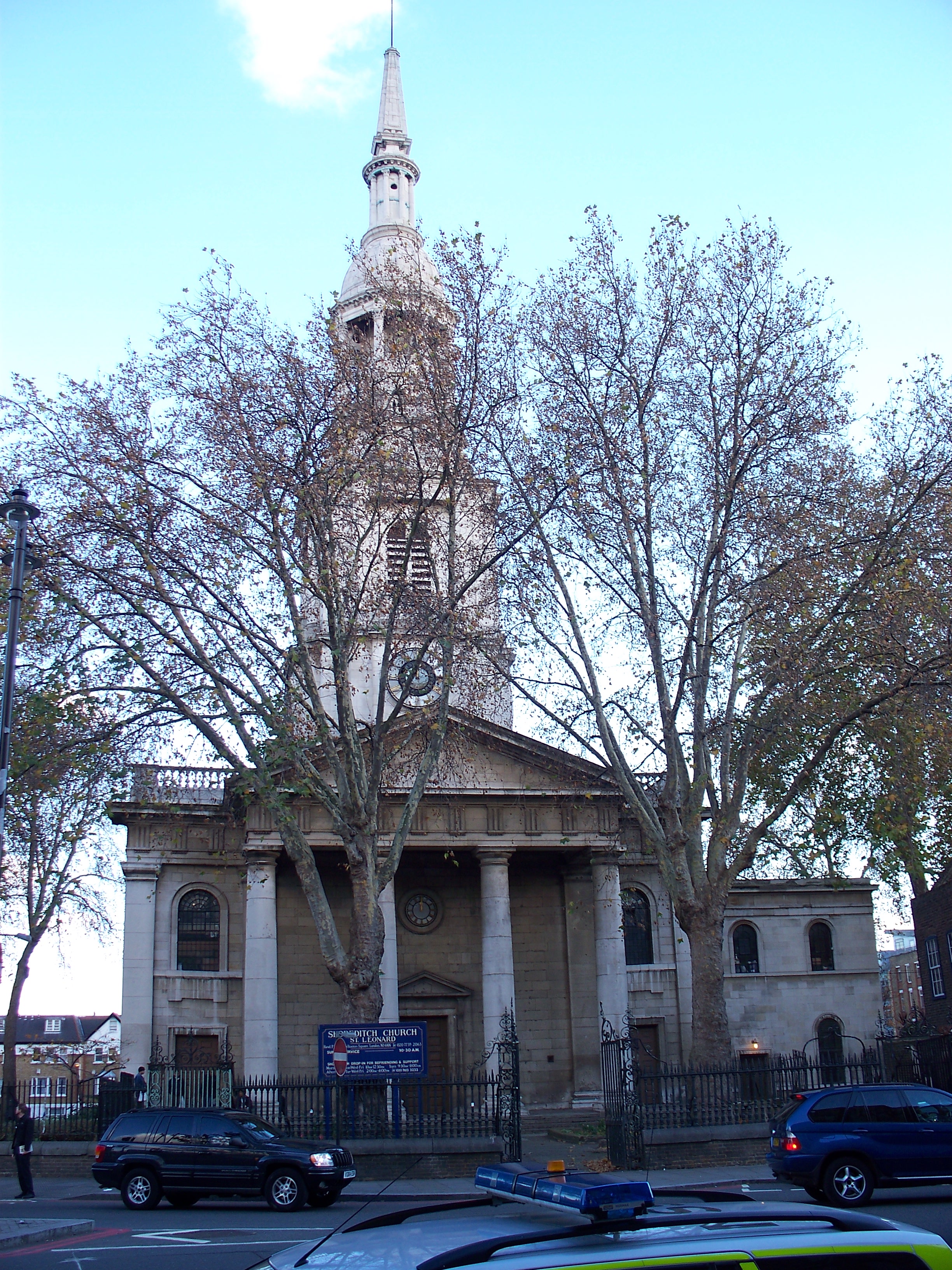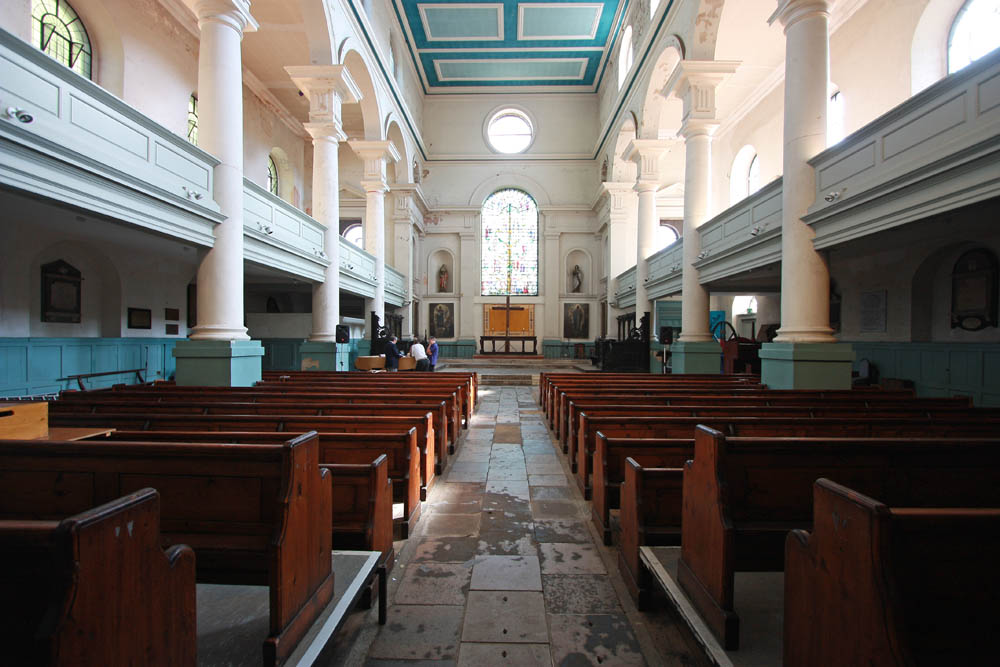|
Christopher Eipper
Christoph Eipper (20 August 1813 – 2 September 1894) was a pioneering missionary and Presbyterian minister in Australia. Biography Christoph Eipper was born to Georg Christoph Eipper and Sophie Juliane Schaettler in Esslingen, Württemberg, Germany. He was the twelfth of fourteen children, eight of which were from his father's previous marriages to Maria Catharina Blankenhorn and Elisabetha Dorothea Ohnmaiss. He studied at the institutions of the Basle Missionary Society, Switzerland, in 1832-36, and of the Church Missionary Society at Islington in 1836. However, despite having received financial support from the Church Missionary Society on condition of accepting Church of England ordination, he and his German colleague Gottlieb Schreiner, father of the novelist Olive Schreiner, refused episcopal ordination because they would not submit to vows of unlimited obedience to a bishop, although they were prepared to receive Lutheran ordination. They consequently ceased their conne ... [...More Info...] [...Related Items...] OR: [Wikipedia] [Google] [Baidu] |
Missionary
A missionary is a member of a religious group which is sent into an area in order to promote its faith or provide services to people, such as education, literacy, social justice, health care, and economic development.Thomas Hale 'On Being a Missionary' 2003, William Carey Library Pub, . In the Latin translation of the Bible, Jesus Christ says the word when he sends the disciples into areas and commands them to preach the gospel in his name. The term is most commonly used in reference to Christian missions, but it can also be used in reference to any creed or ideology. The word ''mission'' originated in 1598 when Jesuits, the members of the Society of Jesus sent members abroad, derived from the Latin ( nom. ), meaning 'act of sending' or , meaning 'to send'. By religion Buddhist missions The first Buddhist missionaries were called "Dharma Bhanaks", and some see a missionary charge in the symbolism behind the Buddhist wheel, which is said to travel all over the earth brin ... [...More Info...] [...Related Items...] OR: [Wikipedia] [Google] [Baidu] |
Tahiti
Tahiti (; Tahitian ; ; previously also known as Otaheite) is the largest island of the Windward group of the Society Islands in French Polynesia. It is located in the central part of the Pacific Ocean and the nearest major landmass is Australia. Divided into two parts, ''Tahiti Nui'' (bigger, northwestern part) and ''Tahiti Iti'' (smaller, southeastern part), the island was formed from volcanic activity; it is high and mountainous with surrounding coral reefs. Its population was 189,517 in 2017, making it by far the most populous island in French Polynesia and accounting for 68.7% of its total population. Tahiti is the economic, cultural and political centre of French Polynesia, an overseas collectivity and an overseas country of the French Republic. The capital of French Polynesia, Papeete, is located on the northwest coast of Tahiti. The only international airport in the region, Faaā International Airport, is on Tahiti near Papeete. Tahiti was originally settled by Polyn ... [...More Info...] [...Related Items...] OR: [Wikipedia] [Google] [Baidu] |
Muswellbrook
Muswellbrook ( ) is a town in the Upper Hunter Region of New South Wales, Australia, about north of Sydney and north-west of Newcastle. Geologically, Muswellbrook is situated in the northern parts of the Sydney basin, bordering the New England region. The area is predominantly known for coal mining and horse breeding, but has also developed a reputation for gourmet food and wine production. As at June 2018 Muswellbrook has a population of 12,364. Estimated resident population, 30 June 2018. Located to the south of the Muswellbrook township are two coal fuelled power stations, Liddell and Bayswater. They were commissioned in 1973 and mid 1980s respectively and employ approximately 500 people from the area. History Before European settlement of the region the Wonnarua and Gamilaroi peoples occupied the land. The first European to explore the area was Chief Constable John Howe in 1819, with the first white settlement occurring in the 1820s. The township of Muswellbrook was ga ... [...More Info...] [...Related Items...] OR: [Wikipedia] [Google] [Baidu] |
Scone, New South Wales
Scone is a town in the Upper Hunter Shire in the Hunter Region of New South Wales, Australia. At the 2006 census, Scone had a population of 5,624 people. It is on the New England Highway north of Muswellbrook about 270 kilometres north of Sydney, and is part of the New England (federal) and Upper Hunter (state) electorates. Scone is in a farming area and is also noted for breeding Thoroughbred racehorses. It is known as the 'Horse capital of Australia'. History Allan Cunningham was the first recorded European person to travel into the Scone area, reaching the Upper Dartbrook and Murrurundi areas in 1823. Surveyor Henry Dangar travelled through the area, prior to passing over the Liverpool Range above Murrurundi in 1824. The first properties in the area were Invermein and Segenhoe in 1825. The town initially started as the village of Redbank in 1826 and in 1831 Hugh Cameron, a Scottish descendant put forward the name of Scone to Thomas Mitchell. It was gazetted as Scone in 183 ... [...More Info...] [...Related Items...] OR: [Wikipedia] [Google] [Baidu] |
Newtown, New South Wales
Newtown, a suburb of Sydney's inner west, is located approximately four kilometres south-west of the Sydney central business district, straddling the local government areas of the City of Sydney and Inner West Council in the state of New South Wales, Australia. King Street is the main street of Newtown and centre of commercial and entertainment activity. The street follows the spine of a long ridge that rises up near Sydney University and extends to the south, becoming the Princes Highway at its southern end. Enmore Road branches off King Street towards the suburb of Enmore at Newtown Bridge, where the road passes over the railway line at Newtown Station. Enmore Road and King Street together comprise 9.1 kilometres of over 600 shopfronts. The main shopping strip of Newtown is the longest and most complete commercial precinct of the late Victorian and Federation period in Australia. King Street is often referred to as "Eat Street" in the media due to the large number of ... [...More Info...] [...Related Items...] OR: [Wikipedia] [Google] [Baidu] |
Singleton, New South Wales
Singleton is a town on the banks of the Hunter River in New South Wales, Australia. Singleton is 197 km (89 mi) north-north-west of Sydney, and 70 km (43 mi) north-west of Newcastle. At June 2018, Singleton had an urban population of 16,346. Estimated resident population, 30 June 2018. Singleton's main urban area includes the town centre, Singleton Heights, Dunolly, Darlington, The Retreat, Wattle Ponds and Hunterview. Surrounding rural villages include Broke, Camberwell, Jerrys Plains, Goorangoola/Greenlands, Belford and Lower Belford. Singleton is located on the north-eastern part of the geological structure known as the Sydney basin, which borders the New England region. History The traditional landowners of the land around what is now Singleton are the Wonnarua / Wanaruah people. The Wonnarua / Wanaruah people have occupied the land in the Upper Hunter Valley for over 30,000 years. Singleton was established in the 1820s. In its early years, it ... [...More Info...] [...Related Items...] OR: [Wikipedia] [Google] [Baidu] |
Ralph Hush
Ralph Hush (1779 – 2 June 1860) was a convict sent from Northumberland to Australia in 1820. He was also one of the first convicts ever to receive a pardon from a life sentence after less than 5 years. Early life Born on a Spittal farm in 1779, Ralph Hush was the youngest of five children. His family lived on a farm in Crookham, Northumberland to live where the family owned and worked on a farm about a mile from there called Crookham Eastfield. He eventually secured a job as a farmer. Transportation Ralph was imprisoned for stealing 20 ewes and 20 lambs, tried and convicted on 14 August 1819 in Newcastle-Upon-Tyne, where he was sentenced to life transportation to Australia. From the time of his trial until the sailing of his convict ship, Ralph Hush lived on a hulk of the ship, the ''Neptune I'', which disembarked from The Downs, England on 23 March 1820. The ship's master was William McKissock and the surgeon was Jas Mitchell. The ''Neptune I'' arrived in Sydney Harbo ... [...More Info...] [...Related Items...] OR: [Wikipedia] [Google] [Baidu] |
Maitland Mercury
The ''Maitland Mercury'' is Australia's third oldest regional newspaper, preceded only by the '' Geelong Advertiser'' (estab. 1840) and the ''Launceston Examiner'' (estab. 1842). The ''Maitland Mercury'' was established in 1843 when it was called ''The Maitland Mercury and Hunter River General Advertiser''. ''The Maitland Mercury'' is still in circulation serving the city of Maitland and the surrounding Lower Hunter Valley. These days the Maitland Mercury has a weekly print edition which appears on Fridays. History It was originally a weekly newspaper, founded by Richard Jones, an English migrant from Liverpool who also served as treasurer of NSW for a brief period. The first issue was published as ''The Maitland Mercury and Hunter River General Advertiser'' on 7 January 1843. It has been a daily since 1894. when it was issued under two banners as ''The Maitland Daily Mercury'' during the week and ''The Maitland Weekly Mercury'' on Saturdays. From 1870 to 1873, Margaret Fall ... [...More Info...] [...Related Items...] OR: [Wikipedia] [Google] [Baidu] |
Editor In Chief
An editor-in-chief (EIC), also known as lead editor or chief editor, is a publication's editorial leader who has final responsibility for its operations and policies. The highest-ranking editor of a publication may also be titled editor, managing editor, or executive editor, but where these titles are held while someone else is editor-in-chief, the editor-in-chief outranks the others. Description The editor-in-chief heads all departments of the organization and is held accountable for delegating tasks to staff members and managing them. The term is often used at newspapers, magazines, yearbooks, and television news programs. The editor-in-chief is commonly the link between the publisher or proprietor and the editorial staff. The term is also applied to academic journals, where the editor-in-chief gives the ultimate decision whether a submitted manuscript will be published. This decision is made by the editor-in-chief after seeking input from reviewers selected on the basis o ... [...More Info...] [...Related Items...] OR: [Wikipedia] [Google] [Baidu] |
Shoreditch
Shoreditch is a district in the East End of London in England, and forms the southern part of the London Borough of Hackney. Neighbouring parts of Tower Hamlets are also perceived as part of the area. In the 16th century, Shoreditch was an important centre of the Elizabethan Theatre, and it has been an important entertainment centre since that time. Today, it hosts many pubs, bars and nightclubs. The most commercial areas lie closest to the city of London and along the A10 Road, with the rest mostly residential. Toponymy Early spellings of the name include ''Soredich'' (c.1148), ''Soresdic'' (1183–4), ''Sordig'' (1204), ''Schoresdich'' (1220–21), and other variants. Toponymists are generally agreed that the name derives from Old English "''scoradīc''", i.e. "shore-ditch", the shore being a riverbank or prominent slope; but there is disagreement as to the identity of the "shore" in question. A suggestion made by Eilert Ekwall in 1936 that the "ditch" might have been one le ... [...More Info...] [...Related Items...] OR: [Wikipedia] [Google] [Baidu] |
St Leonard's, Shoreditch
St Leonard's, Shoreditch, is the ancient parish church of Shoreditch, often known simply as Shoreditch Church. It is located at the intersection of Shoreditch High Street with Hackney Road, within the London Borough of Hackney in East London. The current building dates from about 1740 and is Grade I listed. The church is mentioned in the line ""When I grow rich", say the bells of Shoreditch" from the nursery rhyme '' Oranges and Lemons''.The Centre of Attention at Shoreditch Church'' accessed 06/01/08 The beneath the church is the final resting place of many actors from the [...More Info...] [...Related Items...] OR: [Wikipedia] [Google] [Baidu] |
Strath Allan
A strath is a large valley, typically a river valley that is wide and shallow (as opposed to a glen, which is typically narrower and deep). Word and etymology An anglicisation of the Gaelic word ''srath'', it is one of many that have been absorbed into the English and Scots languages. It is commonly used in rural Scotland to describe a wide valley, even by non-Gaelic speakers. In Scottish place-names, ''Strath-'' is of Gaelic and Brittonic origin. ''Strath-'' names have the genesis with Gaelic ''srath'' meaning "broad-valley", as well as with the Cumbric and Pictish cognates (c.f. Welsh ''ystrad''). Gaelic ''srath'' is derived from Old Irish ''srath'', recorded as having meant "grassland". The modern Scottish Gaelic sense of "broad-valley", paralleling the meaning of Brittonic cognates, developed from substrate influence from Pictish. Toponymy It occurs in numerous place names within Scotland including Strathspey and Strathclyde. Internationally, many places wi ... [...More Info...] [...Related Items...] OR: [Wikipedia] [Google] [Baidu] |






